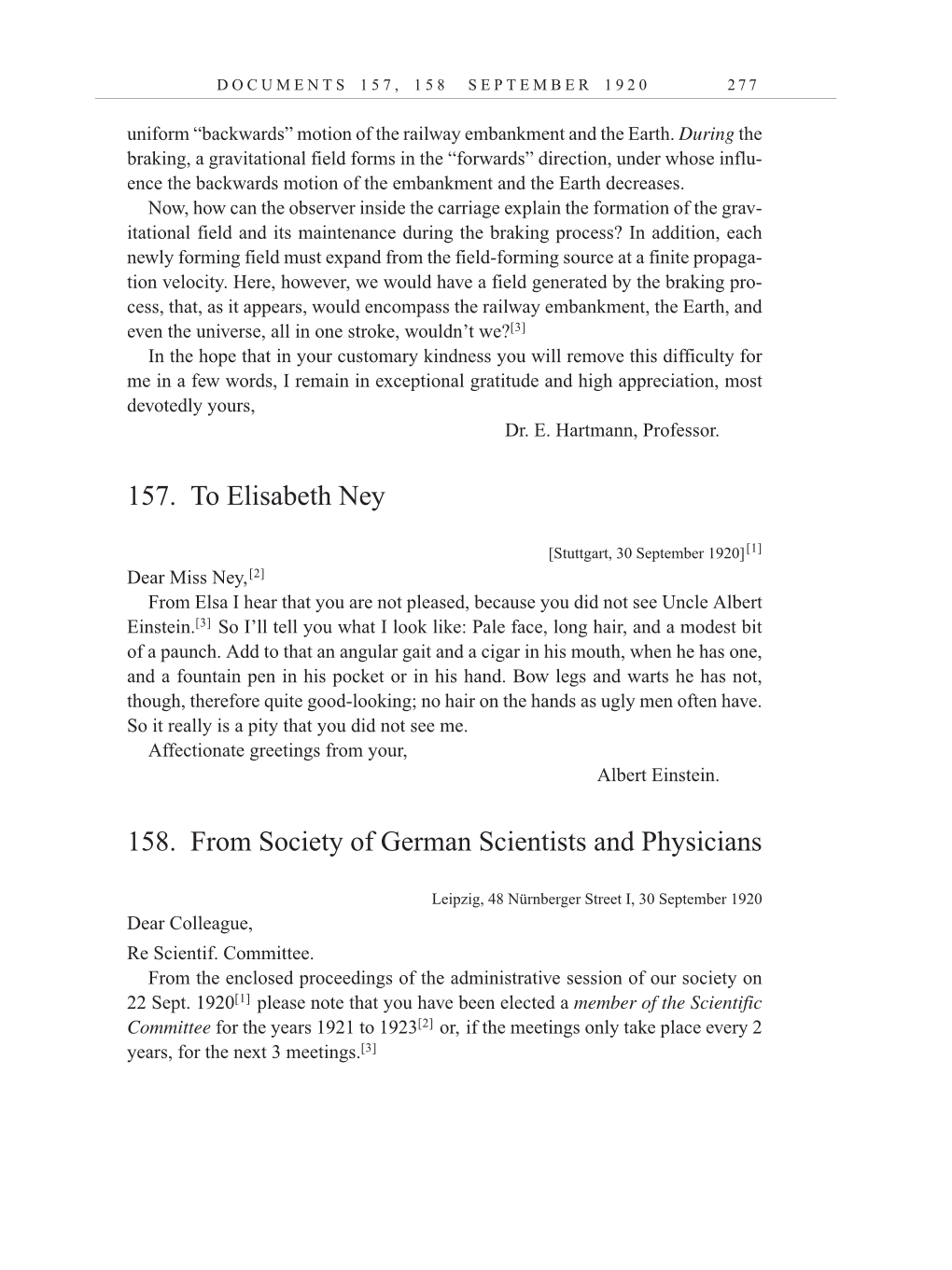D O C U M E N T S 1 5 7 , 1 5 8 S E P T E M B E R 1 9 2 0 2 7 7
uniform “backwards” motion of the railway embankment and the Earth. During the
braking, a gravitational field forms in the “forwards” direction, under whose influ-
ence the backwards motion of the embankment and the Earth decreases.
Now, how can the observer inside the carriage explain the formation of the grav-
itational field and its maintenance during the braking process? In addition, each
newly forming field must expand from the field-forming source at a finite propaga-
tion velocity. Here, however, we would have a field generated by the braking pro-
cess, that, as it appears, would encompass the railway embankment, the Earth, and
even the universe, all in one stroke, wouldn’t
we?[3]
In the hope that in your customary kindness you will remove this difficulty for
me in a few words, I remain in exceptional gratitude and high appreciation, most
devotedly yours,
Dr. E. Hartmann, Professor.
157. To Elisabeth Ney
[Stuttgart, 30 September
1920][1]
Dear Miss Ney,[2]
From Elsa I hear that you are not pleased, because you did not see Uncle Albert
Einstein.[3] So I’ll tell you what I look like: Pale face, long hair, and a modest bit
of a paunch. Add to that an angular gait and a cigar in his mouth, when he has one,
and a fountain pen in his pocket or in his hand. Bow legs and warts he has not,
though, therefore quite good-looking; no hair on the hands as ugly men often have.
So it really is a pity that you did not see me.
Affectionate greetings from your,
Albert Einstein.
158. From Society of German Scientists and Physicians
Leipzig, 48 Nürnberger Street I, 30 September 1920
Dear Colleague,
Re Scientif. Committee.
From the enclosed proceedings of the administrative session of our society on
22 Sept. 1920[1] please note that you have been elected a member of the Scientific
Committee for the years 1921 to 1923[2] or, if the meetings only take place every 2
years, for the next 3 meetings.[3]
